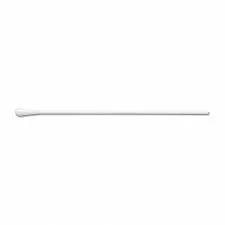Aug . 12, 2024 18:44 Back to list
Exploring the Impact of Sterile Lancets on Diabetes Management and Patient Safety in Healthcare Settings
The Importance of Sterile Lancets in Medical Practices
In the realm of medical practices, especially in fields such as diabetes management and blood sampling, the significance of sterile lancets cannot be overstated. Lancets are small, sharp devices used to pierce the skin and obtain blood samples for various diagnostic and therapeutic purposes. Given the sensitivity of the procedures they are involved in, the sterility of these tools is crucial to ensuring patient safety and the accuracy of test results.
One of the primary concerns associated with the use of non-sterile lancets is the risk of infection. When a lancet is not sterile, it can introduce pathogens into the bloodstream, resulting in severe complications. Infections can lead to prolonged illnesses, further medical interventions, and, in some cases, even life-threatening conditions. Hospitals and medical facilities are fully aware of the critical need for sterility, which is why lancets are typically packaged in sterile environments and designed for single-use. This practice minimizes the chances of cross-contamination and helps uphold the highest standards of patient care.
Beyond the risk of infection, the use of sterile lancets is also fundamental to obtaining accurate blood samples. Contaminated tools can alter the composition of the blood collected, leading to erroneous test results. This can have significant implications for patient diagnoses and treatment plans. For instance, a diabetic patient relying on self-monitoring of blood glucose levels could make misguided decisions based on inaccurate readings, potentially leading to dangerous health outcomes. Therefore, ensuring that lancets are sterile is not only a matter of hygiene but also of accuracy and reliability in medical testing.
sterile lancet

The healthcare industry has made considerable strides in improving the designs and manufacturing processes of lancets to ensure their sterility. Modern lancets often come with features such as safety caps and automatic retraction mechanisms, which not only enhance usability but also reduce the likelihood of unintentional needle-stick injuries, a common concern among healthcare workers. The packaging of these devices is constructed to protect the lancets from environmental contaminants, ensuring that they remain sterile until the moment of use.
Education and training for healthcare professionals and patients are equally important in promoting the use of sterile lancets. Continuous instruction on proper techniques, including how to handle and dispose of lancets safely, is essential in preventing infection and ensuring that patients have the best possible outcomes. For instance, patients with chronic conditions like diabetes should be equipped not only with the tools necessary for self-monitoring but also with the knowledge of how to use them safely. This dual approach fosters a culture of safety and responsibility in both professional and personal healthcare environments.
In conclusion, the significance of sterile lancets in medical practices cannot be underestimated. Their proper use is vital in preventing infections, ensuring accurate blood testing, and ultimately protecting patient health. As the medical field continues to evolve, the emphasis on sterility and safety in blood sampling tools must remain a top priority. By investing in quality lancets, educating users, and adhering to strict protocols, the healthcare industry can continue to minimize risks and enhance patient care outcomes. After all, in medicine, every drop of blood counts, and ensuring its safety begins with the tools we use.
-
Pregnancy Test Calculator: Know Your Weeks, Week by Week
NewsAug.22,2025
-
Malaria Pf Ag Rapid Test Kit - Quick & Accurate Detection
NewsAug.11,2025
-
Accurate Cardiac Marker CK-MB Rapid Test for Quick Results
NewsAug.10,2025
-
Premium Empty ABS Plastic Cassette for Test Strips
NewsAug.09,2025
-
Sterile Urine Cup: Accurate Specimen Collection for Labs & Home
NewsAug.08,2025
-
Malaria Pf/Pan Ag Rapid Test Kit for Fast, Accurate Diagnosis
NewsAug.07,2025

